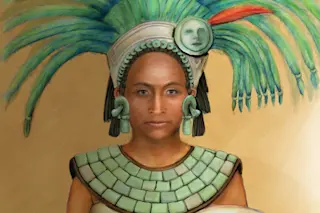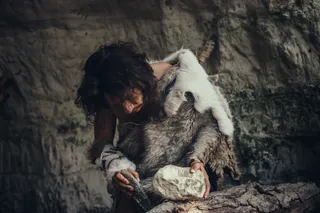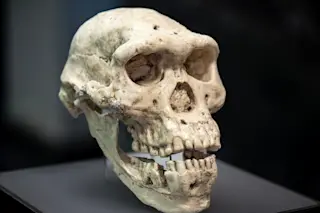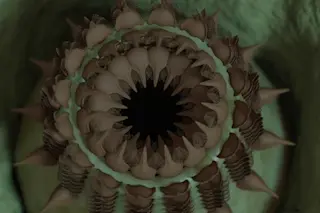The great pyramids of Naachtun lie shrouded in the emerald forest of northern Guatemala. They are part of one of the most remote, inaccessible sites in the entire ancient Maya world. At the height of Maya civilization, this prosperous city lay in a perilous heartland, caught between two clashing superpowers: Tikal and Calakmul.
To study Naachtun and its alliances in treacherous times, University of Calgary archaeologist Kathryn Reese-Taylor made her way to the site in 2004. For three months, she and an international research team mapped Naachtun’s architecture and recorded ancient texts inscribed on altars and limestone blocks (known as stelae). One of these, Naachtun Stela 18, a massive stone that once towered 14 feet in the air, depicts a fierce-looking Naachtun queen. (See sketch at right.) With a battle shield strapped to her arm, this queen stands majestically on the back of an enemy captive, a lord of Calakmul.
...














